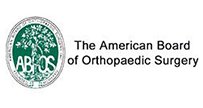Others
Autologus Chondrocyte Implantation
Autologous chondrocyte implantation (ACI) is a procedure to treat the articular cartilage defects of the knee. This procedure is effective for treating small areas of cartilage damage that causes pain and swelling and restricts the range of motion. Autologous chondrocyte implantation is not indicated for those patients who have advanced arthritis of knee.
Autologous chondrocyte implantation is a two-stage procedure.
The first step is performed arthroscopically which evaluates the cartilage defect. If the defect is appropriate for an ACI procedure, the healthy cartilage cells are harvested from the non-weight bearing area of the bone. The healthy cartilage cells are then sent to the laboratory where the cells are cultured and multiplied over a 3- to 5-week period. Once enough cells have been grown, the patient undergoes a second procedure called arthrotomy or an open procedure.
In the second procedure, a large incision is made to expose the area of cartilage damage. A second incision is then made over the shin bone and a “patch” is harvested from the periosteum, a thick tissue that covers the shin bone. This periosteal patch that is harvested is cut appropriately to match the size of the cartilage defect. The patch is then sewn over the cartilage defect and the cultured cells are injected underneath the periosteal patch which holds the new cartilage cells in the area of cartilage defect.
One of the most common complications of ACI is periosteal hypertrophy which occurs due to scar tissue formation around the edges of the periosteal patch. Other complications such as implant failure, knee infection and knee stiffness may also occur.
Following ACI procedure, you will not be allowed to bear weight for at least 6-8 weeks so that the cells adhere to the underlying bone. You may still observe limited range of motion for certain period.
The advantage of ACI procedure is that the cartilage cells are taken from the patient’s own body; hence there is reduced risk of graft being rejected by the patient’s own body. The disadvantage is that it is a two-step procedure and requires an open incision.
Subchondroplasty
Knee osteoarthritis (OA) is a common form of arthritis that causes joint pain and stiffness. It is a progressive disease in which the joint cartilage gradually wears away and may lead to disability.
Bone marrow lesions or BMLs are strong predictors of osteoarthritic cartilage damage. Bone marrow lesions are visible on an MRI but not in a regular X-ray. BMLs are sites of chronic inflammation of subchondral bone. They lie below the bone surface within the marrow and are accompanied by swelling and fluid collection (edema). BMLs are associated with subchondral defects, insufficiency fractures and stress fractures.
Conservative treatments for BMLs include pain medications, knee braces, crutches, and physical therapy. However, long lasting (chronic) BMLs that do not heal by themselves will require treatment. Patients with chronic BMLs have faster cartilage destruction and are more likely to require a total knee replacement, earlier.
Subchondroplasty is a minimally invasive procedure that is performed to specifically repair chronic BMLs by filling them with a bone substitute material. The bone substitute is then slowly resorbed and replaced with healthy bone repairing the bone defect. Subchondroplasty also resolves the associated edema. Subchondroplasty may be performed alone or along with other arthroscopic procedures.
Ideal candidate
Patients diagnosed with BMLs as the primary source of pain in the knee may benefit from the procedure. However, subchondroplasty is contraindicated in patients with BMI more than 40 or those with severe malalignment of the knee joint.
Procedure
The whole subchondroplasty procedure is performed under fluoroscopy to accurately target the chronic BMLs. Fluoroscopy provides the surgeon with intraoperative real time X-ray images of the surgical area to guide the surgeon. Before the procedure, the BMLs are first diagnosed on a T2 Fat Suppressed MRI.
- For subchondroplasty, first, the patient is administered general anesthesia.
- A semi-circular reference frame is placed relative to the individual patient’s tibia or shin bone. The semi-circular frame allows the surgeon to target the internal subchondral location of BML from a range of trajectories. A pin is inserted through the skin to the bone under fluoroscopic imaging using this semi-circular frame.
- A cannulated drill is then used to advance the pin to the desired depth in the bone.
- The semi-circular guide is then removed leaving only the pin.
- A cannula is placed over the pin and is slid into the bone until it is firmly in place.
- The luer lock of the delivery syringe filled with the bone substitute is attached to the back of the cannula.
- The bone substitute is then injected into the bone by applying steady pressure. The delivery syringe is then detached. If more bone substitute is required an additional filled syringe may be attached to the same cannula and injected until the desired volume is reached.
- A trocar is inserted into the delivery cannula to push the left behind bone substitute into the bone.
- The cannula is then removed.
- Finally, proper placing of the bone substitute is confirmed using the fluoroscopic imaging and the incision is closed.
After the procedure
Some pain and discomfort in the operated area is usually experienced for 1-2 days after the procedure. Pain medications will be prescribed to manage it. Crutches will be recommended for 1-2 weeks after the surgery to reduce weight bearing on the operated leg. Physical therapy will also be recommended to regain strength and mobility in the knee.
Advantages of Subchondroplasty
Subchondroplasty is a minimally invasive procedure with the following advantages:
- It is an outpatient procedure. The patient is usually discharged on the same day as the surgery.
- It leads to faster recovery and quicker return to normal activities.
It does not hinder total knee replacement if required in the future.
Partial Meniscectomy
Partial meniscectomy is a surgical procedure to remove the torn portion of the meniscus from the knee joint. Meniscus is the C-shaped cartilage located in the knee that lubricates the knee joint, acts as shock-absorber, and controls the flexion and extension of joint. Meniscal tears can occur at any age, but are more common in athletes playing contact sports. These tears are usually caused by twisting motion or over flexing of the knee joint. Athletes who play sports, such as football, tennis and basketball are at a higher risk of developing meniscal tears.
You may have pain over inner and outer side of the knee, swelling, stiffness of knee, restricted movement of the knee, and difficulty in straightening your knee. If the conservative treatment such as pain medications, rest, physical therapy, and use of knee immobilizers fails to relieve pain, then surgery may be recommended. Surgical treatment options depend on the location, length, and pattern of the tear.
There are two surgical procedures for meniscal tears which includes total and partial meniscectomy. In total meniscectomy, the entire meniscus is removed, but in partial meniscectomy your surgeon will only remove the torn meniscus. Total meniscectomy will help in relieving symptoms, but because the entire meniscus is removed; the cushioning and stability between the joints will be lost. Hence partial meniscectomy is considered.
Partial meniscectomy is performed with arthroscopy, where several small incisions are made around the knee. Through one of the small incision, a miniature camera is inserted to see inside of the knee. Tiny surgical instruments are inserted through other small incisions to repair the tear. During the procedure, the torn meniscus is removed and the remaining edges of the meniscus are smoothened so that there are no sharp ends. Any unstable fragments which are causing locking and catching sensation will also be removed.
Partial meniscectomy helps in restoring or maintaining knee stability and offers faster and complete recovery. After surgery rehabilitation exercises may help to restore knee mobility, strength and to improve range of motion.
Possible risks and complications of partial meniscectomy include infection, bleeding, and injury to blood vessels or nerves.
Meniscal Surgery
Meniscus tear is the commonest knee injury in athletes, especially those involved in contact sports. A suddenly bend or twist in your knee cause the meniscus to tear. This is a traumatic meniscus tear. Elderly people are more prone to degenerative meniscal tears as the cartilage wears out and weakens with age. The two wedge-shape cartilage pieces’ present between the thighbone and the shinbone are called meniscus. They stabilize the knee joint and act as “shock absorbers”.
Torn meniscus causes pain, swelling, stiffness, catching or locking sensation in your knee making you unable to move your knee through its complete range of motion. Your orthopaedic surgeon will examine your knee, evaluate your symptoms, and medical history before suggesting a treatment plan. The treatment depends on the type, size and location of tear as well your age and activity level. If the tear is small with damage in only the outer edge of the meniscus, nonsurgical treatment may be sufficient. However, if the symptoms do not resolve with nonsurgical treatment, surgical treatment may be recommended.
Surgical Treatment
Knee arthroscopy is the commonly recommended surgical procedure for meniscal tears. The surgical treatment options include meniscus removal (meniscectomy), meniscus repair, and meniscus replacement. Surgery can be performed using arthroscopy where a tiny camera will be inserted through a tiny incision which enables the surgeon to view inside of your knee on a large screen and through other tiny incisions, surgery will be performed. During meniscectomy, small instruments called shavers or scissors may be used to remove the torn meniscus. In arthroscopic meniscus repair the torn meniscus will be pinned or sutured depending on the extent of tear.
Meniscus replacement or transplantation involves replacement of a torn cartilage with the cartilage obtained from a donor or a cultured patch obtained from laboratory. It is considered as a treatment option to relieve knee pain in patients who have undergone meniscectomy.











